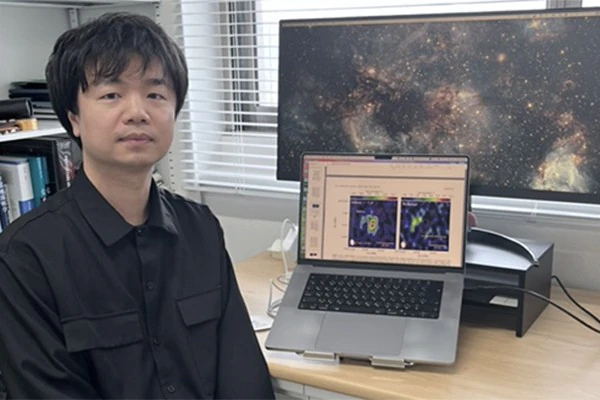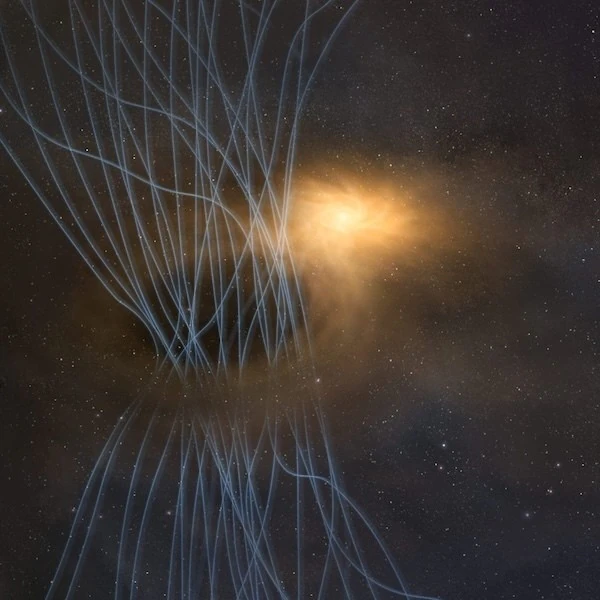
Twinkle twinkle baby star, 'sneezes' tell us how you are
May 16, 2024

A research team led by Kazuki Tokuda of Kyushu University has shed new light into a critical question on how baby stars develop. Using the ALMA radio telescope in Chile, the team found that in its infancy, the protostellar disk that surrounds a baby star discharges plumes of dust, gas, and electromagnetic energy. These 'sneezes,' as the researchers describe them, release the magnetic flux within the protostellar disk, and may be a vital part of star formation.
Stars, including our Sun, form from stellar nurseries, dense regions of gas and dust. During star formation, a protostellar disk surrounds the nascent star. Magnetic fields penetrate these structures, but if magnetic flux were retained, the resulting magnetic fields would be much stronger than those observed in any known protostar.
The team hypothesized that some mechanism removes this magnetic flux during star formation. Observing the stellar nursery MC 27 with the ALMA telescope, they discovered "spike-like" structures extending from the protostellar disk, identified as expelled magnetic flux, gas and dust. This phenomenon, called 'interchange instability', results in the outward ejection of magnetic flux, which has been likened to the 'sneeze' of a baby star.
These findings, including similar structures in other young stars, provide insights into star and planet formation and enrich our understanding of star and planet formation in the universe.

Links
- Discovery of Asymmetric Spike-like Structures of the 10 au Disk around the Very Low-luminosity Protostar Embedded in the Taurus Dense Core MC 27/L1521F with ALMA
- Press Release (Kyushu University 2024/04/11)
- Press Release (ALMA 2024/04/11)
- Formation and Evolution of Planetary Systems Lab.
- Department of Earth and Planetary Sciences